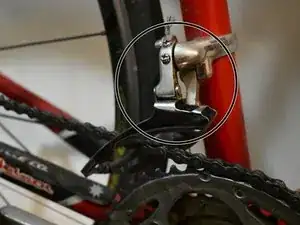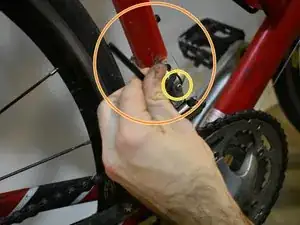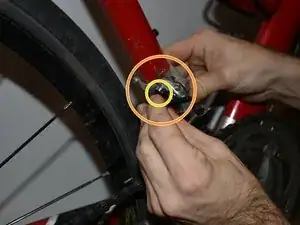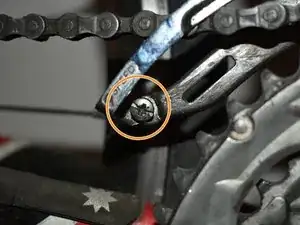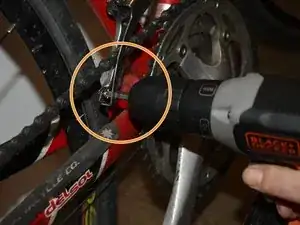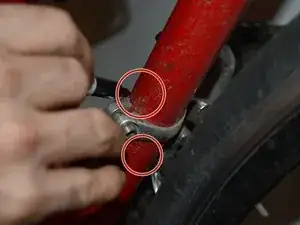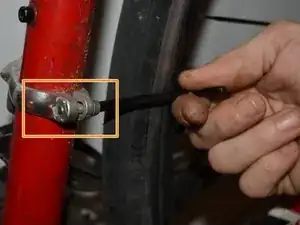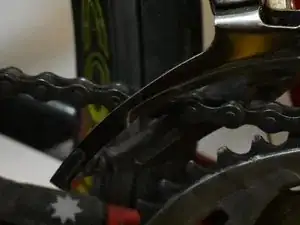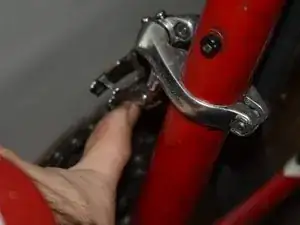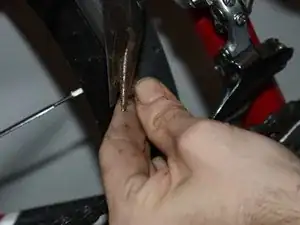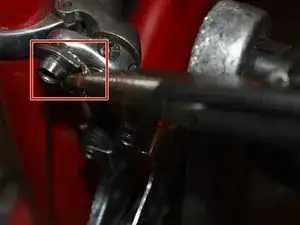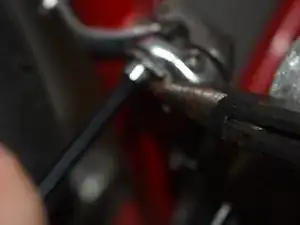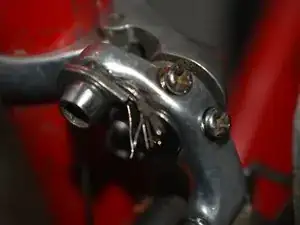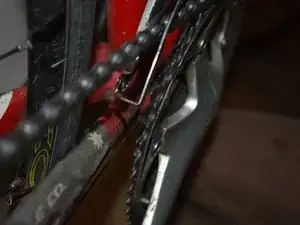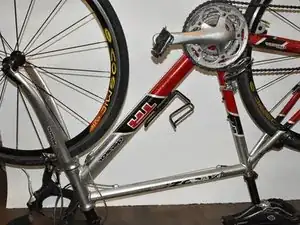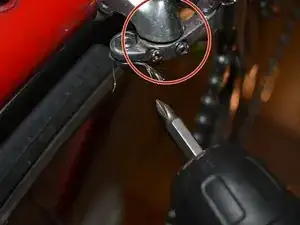Einleitung
The front derailleur is the mechanism that shifts the chain on a bike with more than one front chain-ring. Its function is to move the chain from side to side between the front chain rings to shift gears; however, it has to do this with the top, taut portion of the chain. There are many different makes and models, but they all share the same basic design and functionality. Front derailleurs are attached to the bike with either a clamp or bracket. You need the correct "clamp size" (the clamp is the ring that anchors the derailleur to the bottom of your seat tube). Clamps come in 1-1/8", 1-1/4", and 1-3/8". Most bikes will use the 1-1/4" size.
Werkzeuge
Ersatzteile
-
-
The first step is to shift your chain onto the biggest gear on your crankset.
-
Then pull off the shift cable’s end cap and loosen the cable pinch 4.5mm bolt with a 5mm hex wrench. The cable will come loose from a slot underneath the derailleur.
-
-
-
Before removing the clamp post, mark where it is positioned with a felt tip or Expo marker. This ensures the new part will be placed in the same position.
-
Unscrew the 5mm hex bolt that tightens the clamp onto the seat post.
-
Remove the clamp from the seat post.
-
This will remove the old derailleur.
-
-
-
Before installing the new derailleur, apply some WD-40 to the mounting bolt.
-
Attach the new derailleur to the chain.
-
Place the clamp around the frame and tighten the mounting bolt just enough to keep it in place. At this point you still need to be able to move it by hand.
-
Check to make sure the cage of the derailleur will clear the large chain-ring when the the hinge extends.
-
-
-
Take up the slack on the shifter cable with pliers and tighten down the bolt on the retaining clamp.
-
Thread the shift cable back into the derailleur, pull it tight and tighten the anchor bolt so the cable flattens. Then find a bare stretch of cable and give it a good pull to make sure the cable is seated and has no slack. Then loosen the cable, pull it tight again and re-tighten it.
-
-
-
Now reassemble the chain and remove the stiffness.
-
If your chain is still on the bike, undo the tail screw on the derailleur cage and flex the cage to pull the chain through. Then re-install and tighten the tail screw again.
-
If you have removed the chain, re-route the chain through the derailleur cage and reconnect it.
-
-
-
Now turn your bike upside down and change the gears.
-
Run through the entire range of rear sprockets to make sure the chain does not rub on either side of the front derailleur cage.
-
-
-
Turn the bike to standing position. Now adjust the derailleur’s height and angle. Use half turns while adjusting.
-
For height adjustment, the bottom edge of the outside derailleur cage should sit approximately 2mm above the top of the teeth on the largest chain-ring.
-
For the angle adjustment, rotate the derailleur until the cage is parallel with your chain-rings.
-
Adjust the derailleur limiting screws and cable tightness as needed.
-
Maintenance includes: Changing through the gears one or two at a time. It isn’t a simple as just ‘clicking’ your shifter. Making the chain ride up and engage with another cog is a combination of your smooth pedalling action and a crisp clean shift. Sometimes you need to press your lever or twist your wrist just that little bit more before you release it. Aim for a good firm shift rather than a cautious hesitant one. Every shifter/derailleur combination is different; develop a feel for yours.
With derailleur gears, you cannot change gear when you are stationery and changing out of the wrong gear whilst you are going slowly or pedalling up a hill for example can be very difficult. You need to be in the right gear for the moment. Always remember to change down to a low gear before coming to a stop or hitting a hill.
3 Kommentare
Very helpful
What model is this with open chain-case or open loop i don want to removed de chain at all.
Might matter which gear and chainring you are using at first adjustment
peking -
